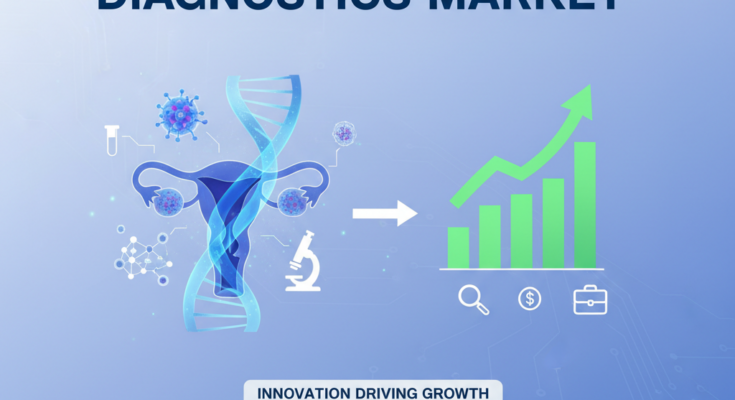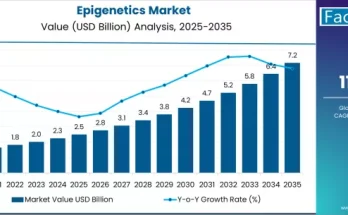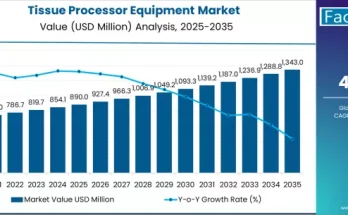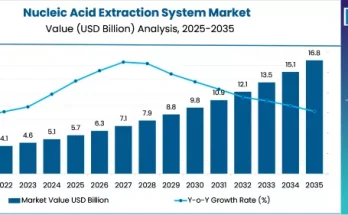Ovarian cancer remains one of the most challenging gynecologic cancers to detect in its early stages due to subtle symptoms and a lack of specific screening tools. The ovarian cancer diagnostics market plays a critical role in enabling early detection, improving patient outcomes, and guiding personalized treatment plans. With advancements in technology and increased awareness among healthcare providers and patients, this market is witnessing significant innovation in diagnostic techniques and tools.
Market Overview
The ovarian cancer diagnostics market encompasses a wide range of technologies, including imaging systems, biomarker testing, genetic testing, and molecular diagnostics. These tools aim to detect ovarian cancer at the earliest possible stage, enabling timely intervention and improving survival rates. Additionally, the market is driven by the growing demand for non-invasive and minimally invasive diagnostic techniques, as patients increasingly prefer methods that reduce discomfort and risk.
Modern ovarian cancer diagnostics integrate artificial intelligence and machine learning to enhance accuracy and reduce false positives. Healthcare institutions and laboratories are investing in next-generation sequencing and advanced imaging technologies, making ovarian cancer detection more precise and personalized.
Key Market Drivers
Several factors are contributing to the expansion of the ovarian cancer diagnostics market:
- Rising Awareness and Screening Initiatives: Increased awareness campaigns and preventive healthcare programs encourage women to undergo routine screening, fueling demand for reliable diagnostic solutions.
- Technological Advancements: Innovations in imaging techniques, biomarker identification, and molecular diagnostics are enhancing early detection capabilities. These developments allow healthcare professionals to tailor treatment strategies based on individual patient profiles.
- Personalized Medicine: The shift towards personalized medicine, where diagnostics guide targeted therapies, is a significant market driver. Molecular and genetic testing can identify patients who are likely to respond to specific treatments, improving clinical outcomes.
- Regulatory Support: Governments and health organizations worldwide are supporting initiatives for cancer diagnostics, emphasizing early detection as a key strategy to reduce mortality rates.
Regional Insights
The ovarian cancer diagnostics market is witnessing varied adoption across different regions. North America and Europe lead in market penetration due to advanced healthcare infrastructure, widespread awareness, and robust regulatory frameworks. These regions also benefit from strong collaborations between diagnostic companies and research institutions, which drive innovation in early detection technologies.
The Asia-Pacific region is emerging as a key market, with increasing investment in healthcare infrastructure, rising prevalence of ovarian cancer, and growing adoption of advanced diagnostic techniques. Meanwhile, regions like Latin America and the Middle East are expected to witness gradual growth as healthcare awareness and accessibility improve over time.
Key Trends
The ovarian cancer diagnostics market is evolving rapidly, influenced by technological innovation, clinical research, and patient-centric approaches. Some notable trends include:
- Non-Invasive Diagnostic Techniques: Liquid biopsies and blood-based biomarker tests are gaining prominence as they allow for early detection without invasive procedures.
- Integration of Artificial Intelligence: AI-powered imaging and diagnostic tools are improving detection accuracy, reducing human error, and enabling predictive analytics.
- Point-of-Care Diagnostics: Portable and easy-to-use diagnostic devices are enhancing accessibility, particularly in remote and underserved areas.
- Collaborative Research Initiatives: Public-private partnerships are accelerating the development of novel diagnostic methods, combining expertise from academia, healthcare providers, and biotech firms.
Applications & End-Use Outlook
Ovarian cancer diagnostics are utilized across multiple settings, including hospitals, diagnostic laboratories, research institutions, and outpatient clinics. Hospitals remain the primary end-users, leveraging advanced imaging, histopathology, and biomarker testing for early-stage detection and treatment planning.
Laboratories and research facilities play a crucial role in developing next-generation diagnostics and refining testing methodologies. Additionally, outpatient clinics and telemedicine platforms are increasingly offering non-invasive and at-home testing solutions, expanding patient access and convenience.
Challenges
Despite growth opportunities, the ovarian cancer diagnostics market faces several challenges:
- Complexity of Early Detection: Ovarian cancer often presents with nonspecific symptoms, making early detection challenging even with advanced diagnostics.
- High Costs of Advanced Technologies: Cutting-edge diagnostics such as genetic sequencing and AI-driven imaging are expensive, potentially limiting access in certain regions.
- Regulatory Hurdles: Navigating complex approval processes for new diagnostic tools can delay market entry and adoption.
- Data Privacy Concerns: With the integration of AI and digital health solutions, ensuring patient data security and privacy is critical.
Recent Developments
The ovarian cancer diagnostics market is witnessing several significant developments:
- Emergence of Multi-Omics Approaches: Combining genomics, proteomics, and metabolomics for comprehensive diagnostics is enabling more accurate detection and better treatment stratification.
- AI-Powered Imaging Solutions: Companies are integrating AI into MRI and CT imaging, enhancing tumor detection sensitivity and reducing diagnostic errors.
- Expansion of Biomarker Panels: New biomarker discoveries are expanding testing capabilities, improving early detection and risk assessment for high-risk populations.
Future Outlook
The future of the ovarian cancer diagnostics market is poised for growth, driven by innovation, rising healthcare awareness, and an emphasis on personalized medicine. Technological advancements in genomics, liquid biopsy, and AI-based diagnostics are expected to revolutionize ovarian cancer detection and treatment planning.
Collaborations among diagnostic companies, research institutions, and healthcare providers will continue to fuel innovation, ultimately improving early detection rates and patient outcomes. Furthermore, the increasing adoption of minimally invasive and cost-effective diagnostics will expand accessibility across regions, making early ovarian cancer detection more widespread.
Conclusion
The ovarian cancer diagnostics market is playing a pivotal role in transforming patient care by enabling early detection, personalized treatment, and improved survival rates. Continuous technological advancements, strategic collaborations, and growing awareness among healthcare providers and patients are shaping a promising future for this market.
As ovarian cancer remains a major health challenge for women globally, investing in innovative diagnostic solutions and ensuring widespread accessibility will be key to reducing mortality rates and enhancing quality of life. For organizations and healthcare stakeholders, staying informed about market trends, emerging technologies, and regulatory developments will be crucial in navigating this evolving landscape successfully.



